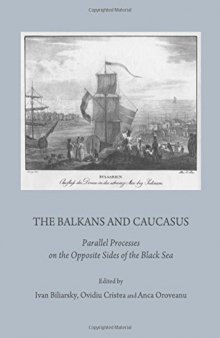 جزییات کتاب
جزییات کتاب
The overall character of the Black Sea region has been defined over time in various ways. For specialists in economy and trade, it has represented a region at the crossroads of the trade routes between Europe and Asia; for political scientists and historians, it has been a space of confrontation between the great terrestrial and naval powers; for the scholars attentive to its cultural dimensions, it has been a contact zone, a space of interaction between different peoples, religions and cultures. These attempts at a definition all revolve around an essential (and ambivalent) feature of the Black Sea as a factor of connection, a bridge, and at the same time a border, a dividing line between Europe and Asia, between the Baltic and the Mediterranean region. In this fluctuation between the two, the predominance of one over the other ( bridge or border ) has depended on a number of factors, first among them the distribution of power relations in the region. This volume, which originated in a symposium hosted by the New Europe College Institute for Advanced Study in Bucharest, brings together contributions coming from scholars within the Black Sea region and outside it, in an attempt to look at the Balkans and Caucasus from a comparative and multi-disciplinary perspective, highlighting their differences, as well as their common features. The overarching question this volume and the papers included in it address and leave open is to what extent we are dealing with a coherent zone, whose past, present and future can legitimately be considered as being traversed by meaningful interrelations, suggesting a shared destiny.



 دانلود کتاب
دانلود کتاب

 جزییات کتاب
جزییات کتاب





 این کتاب رو مطالعه کردید؟ نظر شما چیست؟
این کتاب رو مطالعه کردید؟ نظر شما چیست؟
